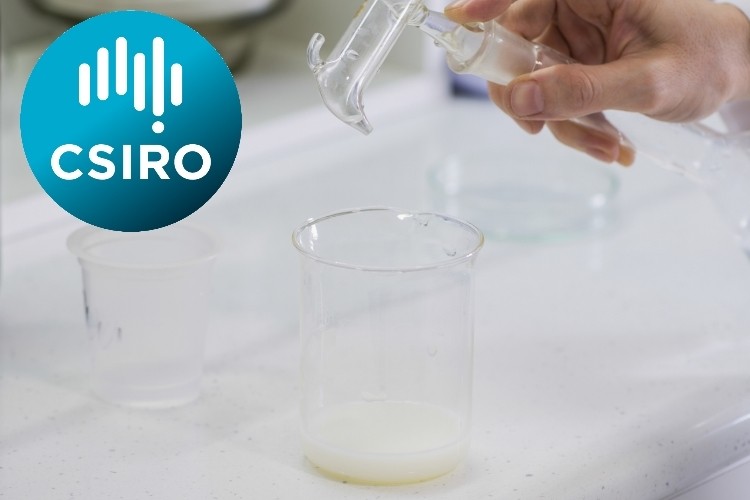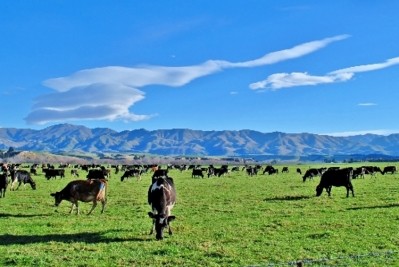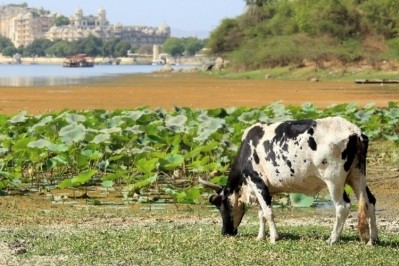Australian startup awarded license for device which can measure dairy proteins
Cybertongue has protein detection licked

PPB Technology was granted a license to market the potentially game-changing device, which was developed by CSIRO, the independent Australian federal government agency responsible for scientific research.
Cybertongue, as it is known, uses minute biological protein sensors to accurately measure specific components of milk like lactose on the spot, and communicate by changing the color of the light they emit.
When the sensors are connected to a shoebox-sized reading machine for analysis, the light signals are converted into meaningful numbers. The device can also be applied across a range of fields such as food safety, environmental monitoring and human health.
Canberra-based PPB will initially focus on Cybertongue’s diagnostic potential in the dairy industry, detecting spoilage enzymes in milk as well as levels of lactose, which is becoming a big issue among Australian consumers.
"For milk processors, current diagnostic methods for lactose are expensive and it can take up to a week to receive results, causing costs and delays for processors and increasing prices for consumers,” said PPB’s founder, Stephen Trowell, a former CSIRO scientist.
"By using a special biosensor for lactose the Cybertongue technology provides accurate and close to real-time measurements anywhere in the production line, meaning products can be distributed sooner without risking product quality."
Lactose-free
It is estimated that 4% of Australians are lactose intolerant. More broadly, the problem may affect up to two-thirds of the world’s human population.
Research suggests a growing number of people in Australia and around the world are starting to prefer lactose-free dairy alternatives, with the global market for these products set to grow to over US$10bn over the next six years.
A study of 1,184 Australian adults by the University of Adelaide found that one in six is now choosing to avoid milk and dairy foods. Around three quarters of these are doing so without seeking medical advice.
The survey found that a further three-quarters of these dairy avoiders are following this path in a bid to relieve adverse gastrointestinal symptoms such as cramps, bloating and wind. Far fewer participants cited not liking the taste of dairy or because they thought it is fattening.
Between 2011 and 2015, the number of Australian adults reporting they were lactose intolerant grew by just over 240,000 sufferers—an increase driven almost entirely by women, Roy Morgan Research found.
“Lactose intolerance occurs when a person’s body doesn’t produce enough of the lactase enzyme to break down the lactose found in dairy milk and some foods,” said Michele Levigne, chief executive of the market researcher.
“Although medical and health research does not tend to identify women as being more susceptible to the condition than men, our data shows that it is considerably more prevalent among Australian women."
She said food and beverage brands wishing to reach lactose-intolerant consumers with products catering to their dietary limitations need an in-depth knowledge of these people to ensure their marketing resonates with the right audience.
“Beyond age and gender breakdowns, a more holistic understanding of how lactose-intolerant Aussies feel about food and health could make all the difference when it comes to attracting them,” Levigne added.
Precise measurements
Dr Trowell says it is important for precise measurements of milk composition to be taken at each link of the dairy value chain.
For example, dairy farmers will need to manage the fertility of their herds, get early warnings of any health problems that might be looming and keep tabs on their productivity and efficiency.
Then processors must measure regulated substances such as antibiotics, and assess the quality and suitability of each tanker load for its intended use. They also need to have confidence in the specifications of their final product.
“Wherever you sit in the value chain, you want your measurements to be reliable, easy to make and fast,” Dr Trowell said.
“Milk is a familiar foodstuff but from an analyst’s point of view it is a complex and difficult ‘matrix’. This is why most milk measurements are still made in a central laboratory rather than on-the-spot in the dairy or factory.”
One of the great strengths of Cybertongue is that it is customizable and could in the future measure any food component or contaminant of interest. To this end, CSIRO has been developing future sensors for wider applications of the device as part its strategic partnership with PPB Technology.
"The unique way we have built the technology means we can develop sensors that detect a wide range of substances including toxins, allergens and enzymes," senior CSIRO researcher Alisha Anderson said.
In human health this technology could lead to the diagnosis of potentially fatal health conditions like sepsis in just a few minutes, rather than current methods which take a few hours, potentially leading to faster and more effective treatment.
"It could also be used for the early diagnosis of some cancers. This is a great example of how a startup can take science and innovation developed inside of CSIRO into the Australian community,” Dr Anderson added.








